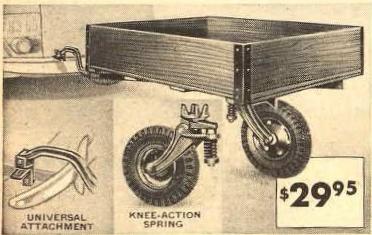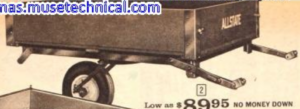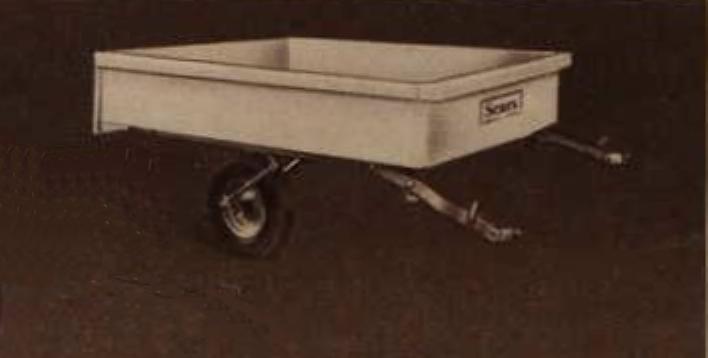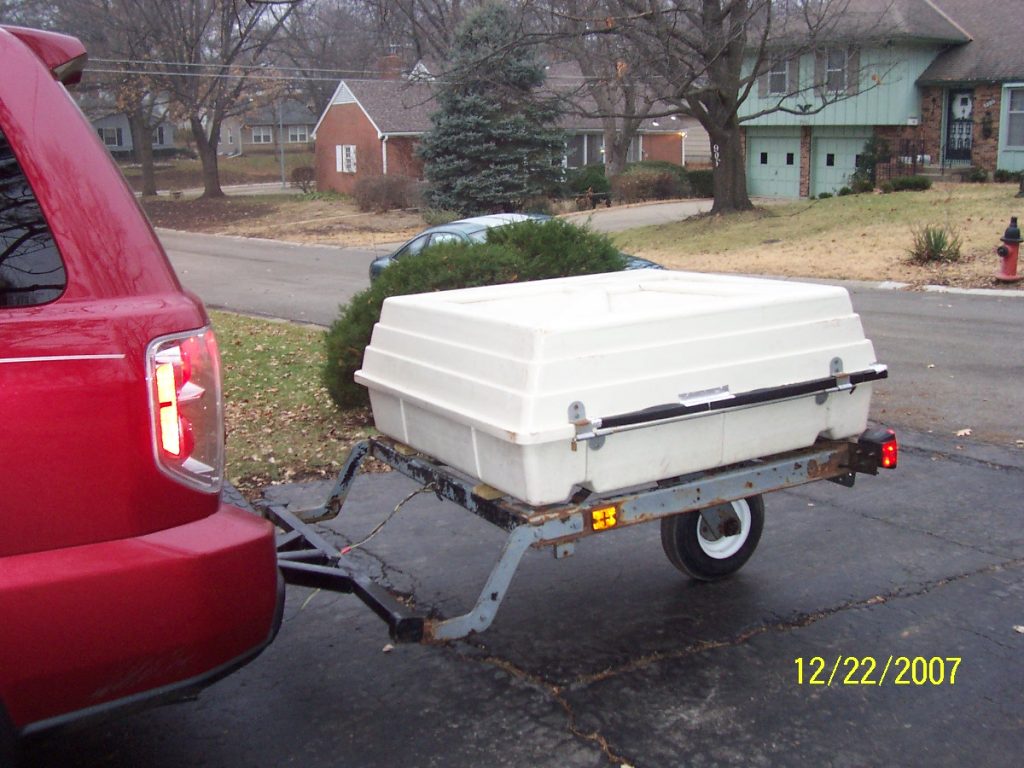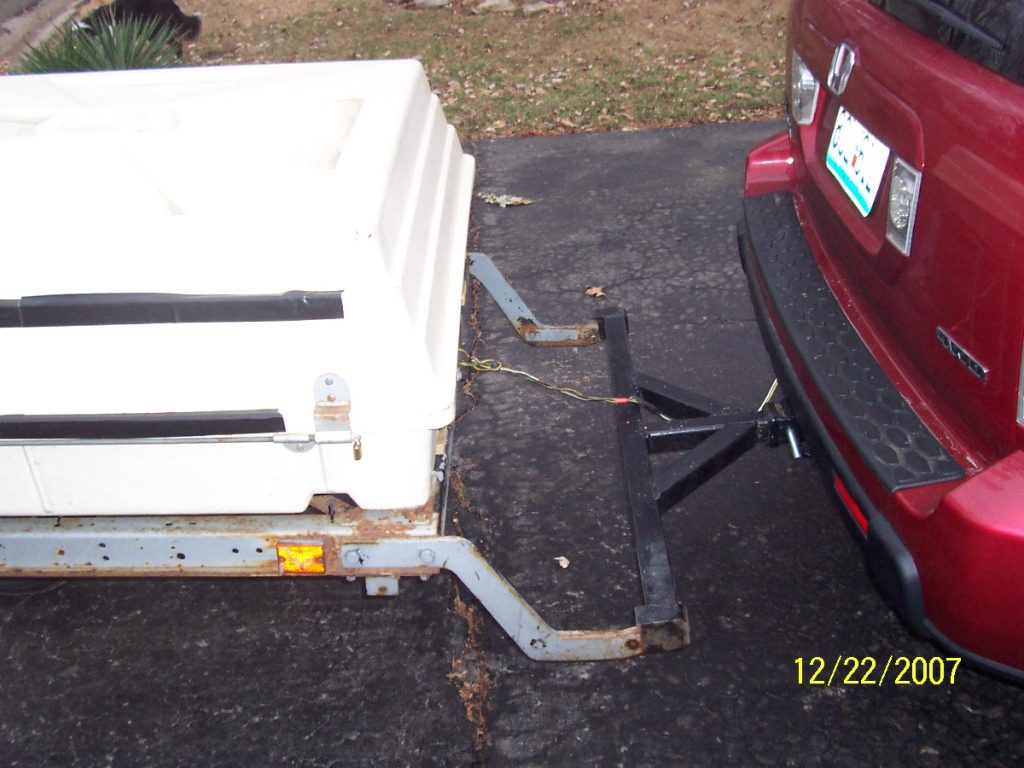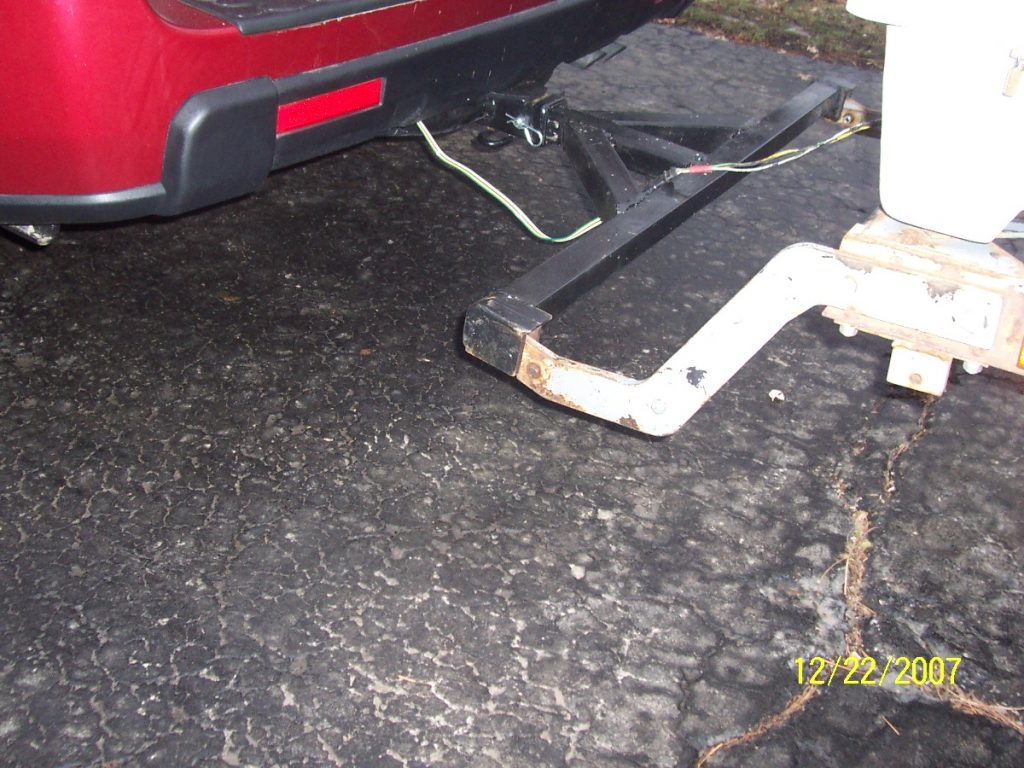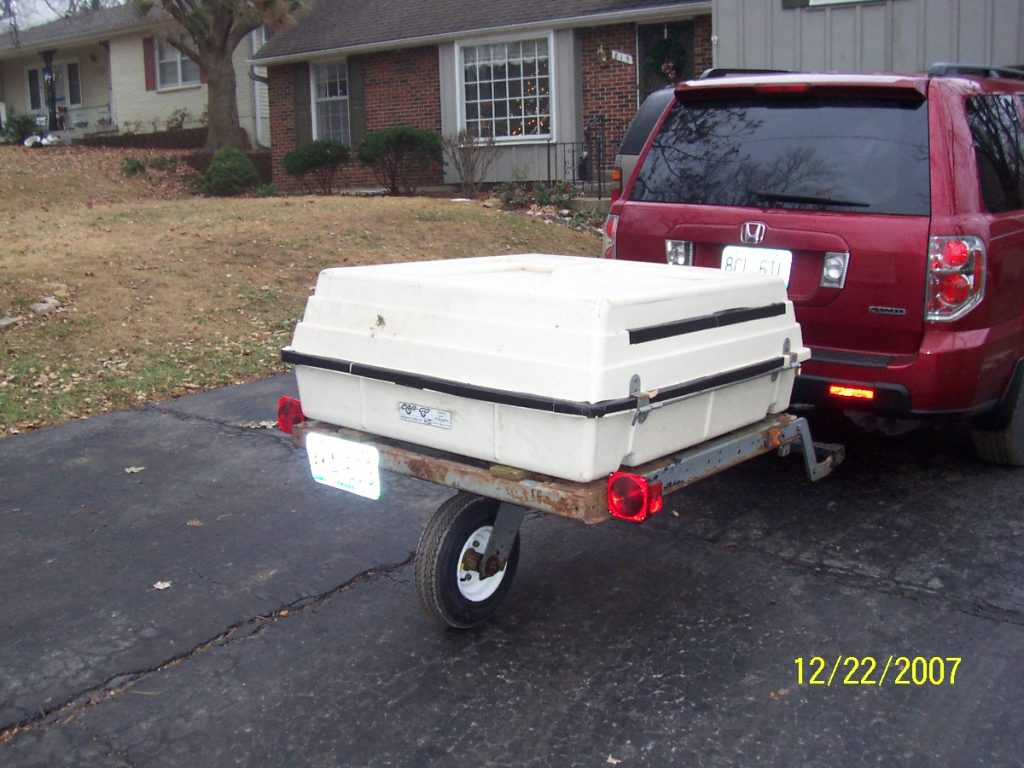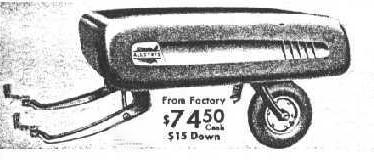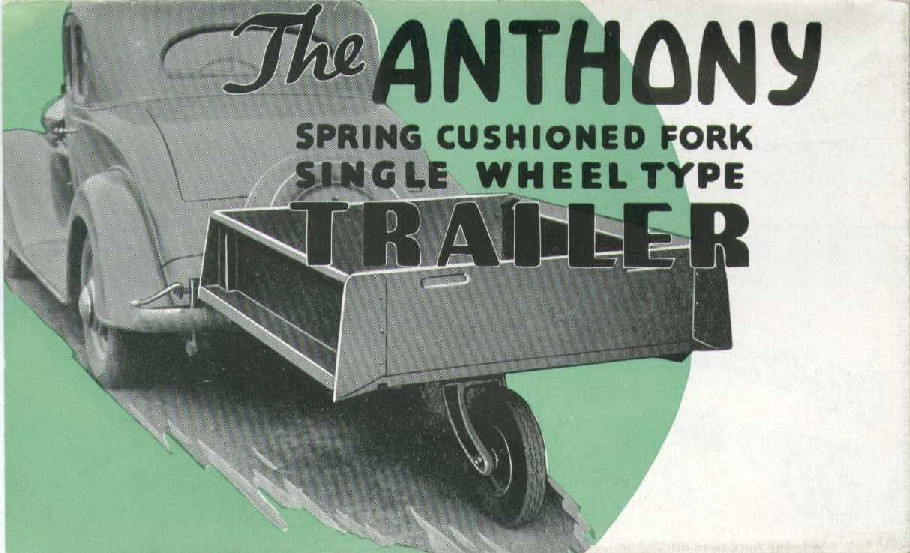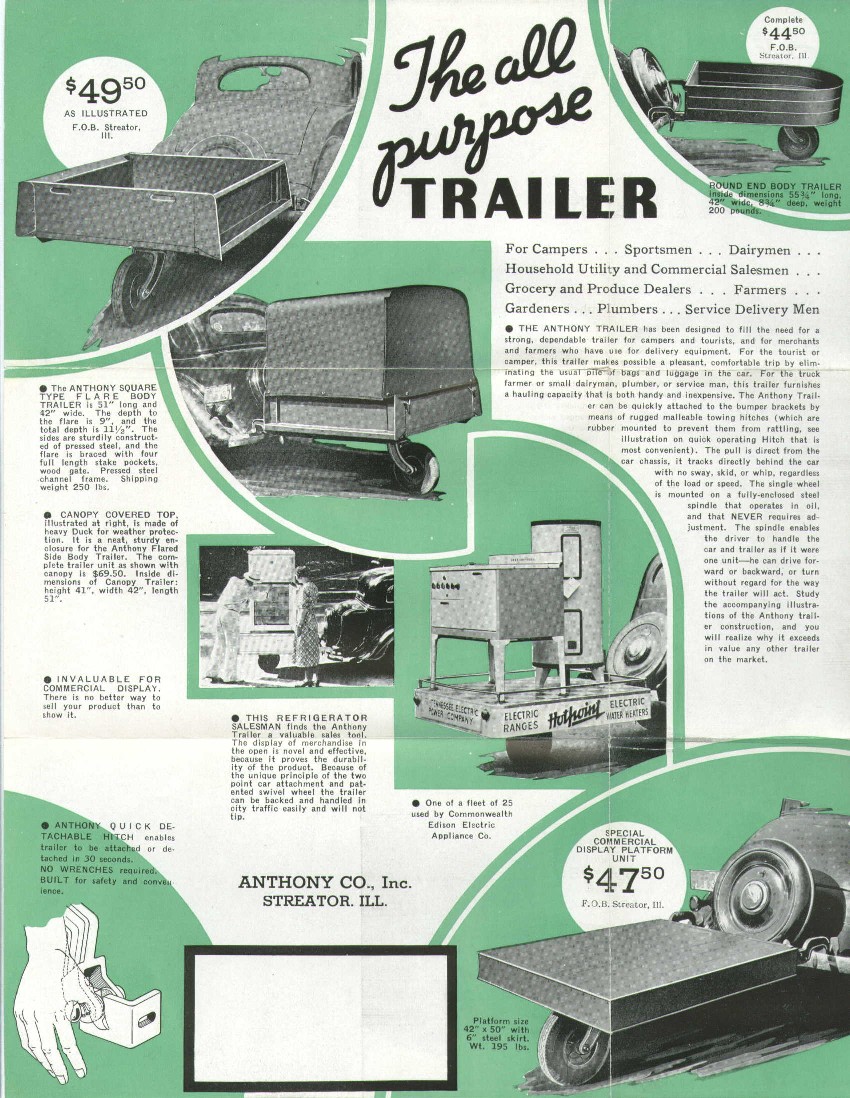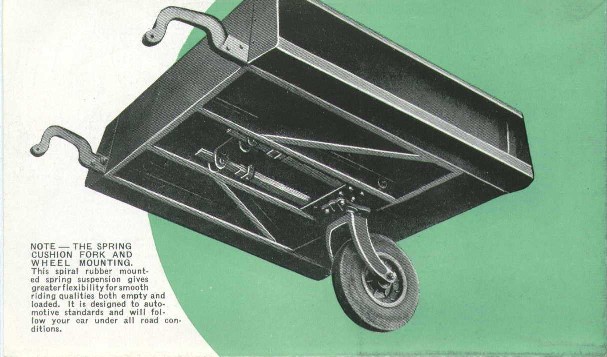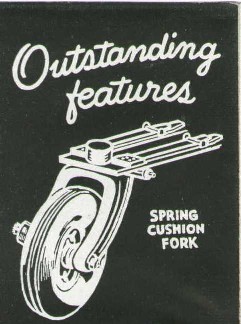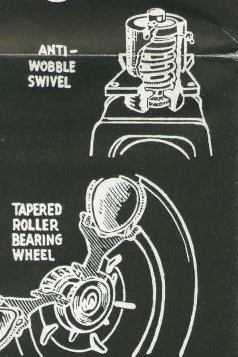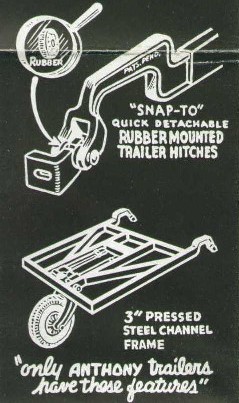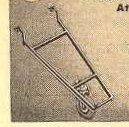
When World War II came to a close and civilian manufacturing gradually resumed, Sears wasted little time in reintroducing its popular Single Wheel trailers to the American market. By the time the 1948 Sears Fall Catalog was published, advertisements for these trailers once again appeared prominently among the company’s many postwar product offerings. In addition to the traditional wood box trailer that customers had come to recognize, Sears introduced an entirely new option for the first time — the “Chassis Only” version, designed specifically for the growing number of do-it-yourself builders interested in crafting their own custom trailer bodies at home.
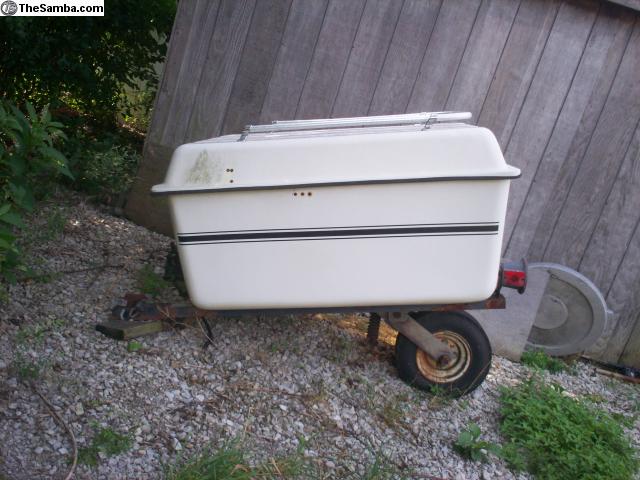
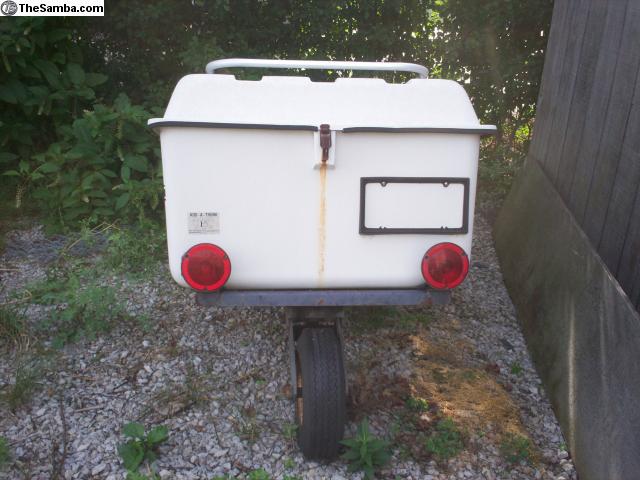
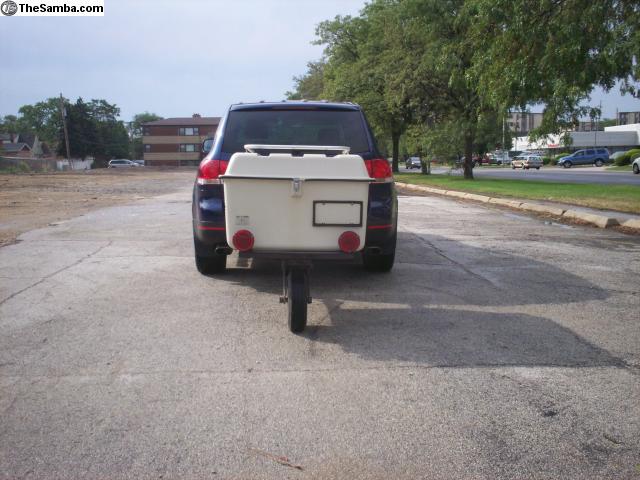
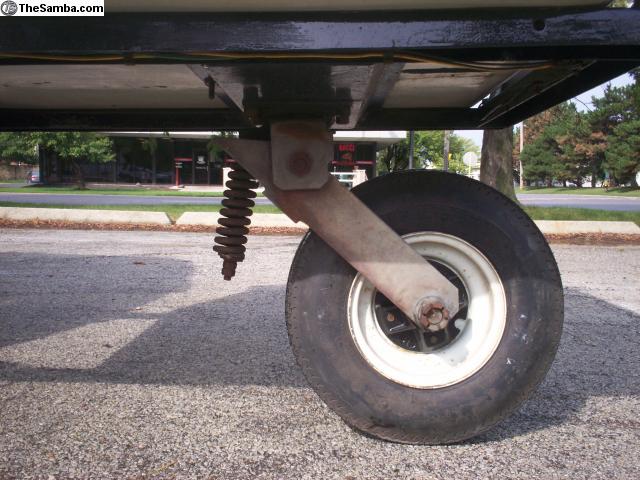
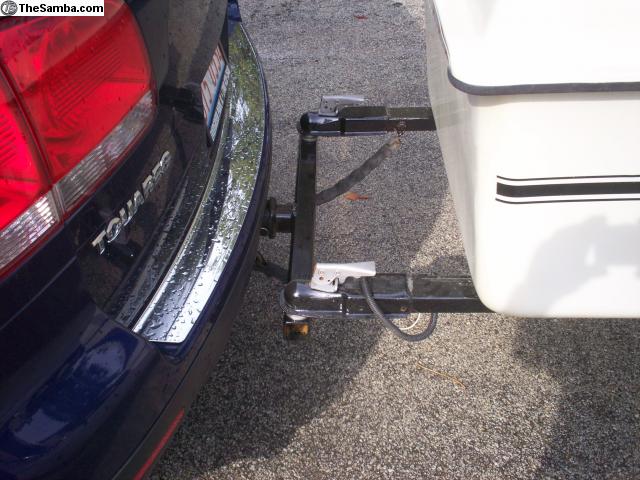
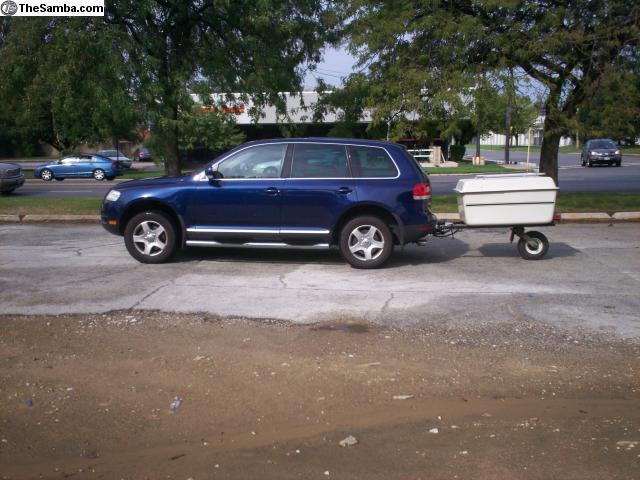
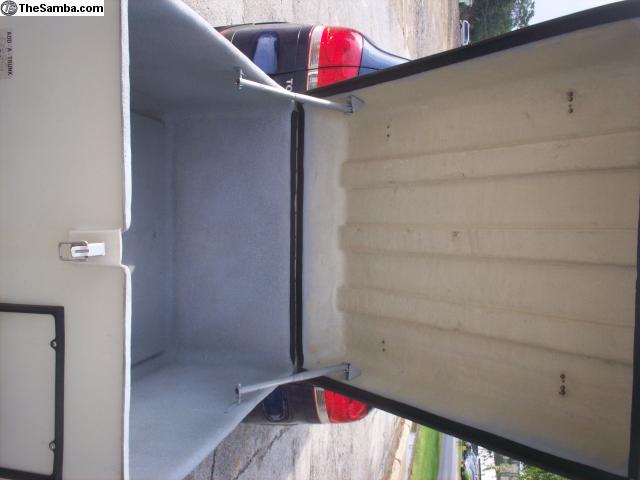
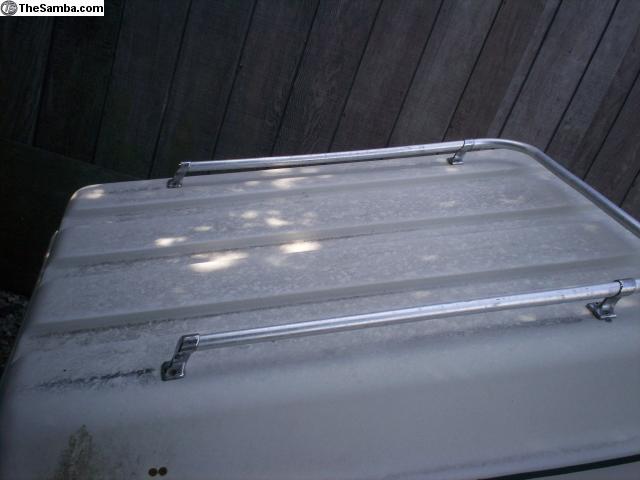







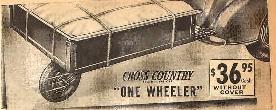 Allstate 1st Gen – CrossCountry: A single wheel trailer appeared in the Sears 1939 Spring catalog, evidently its debut there. This model was called the “Cross Country,” a brand name it shared with a two-wheel trailer shown on the same page. It appears to have been in production only a year and a half. The catalog described it as having “Live Rubber Spring” suspension, touted as being longer lasting than metal coil springs. Its tongue arrangement was totally different from all later models, being straight pieces of metal sticking out of the front of the chassis and connected to the bumper by means of ball-and-socket couplings. (Extension arms could be bought if you needed more clearance between the car and the trailer.) The trailer, rated at 750 pounds of cargo capacity, sold for $36.95. It was made in Niles, Ohio unlike the “Cross Country” two-wheeled trailer which was made in Connorsville, Indiana. They appear to be identical to the “Yocar” trailer made by the Youngstown Steel Car Corporation in Niles, Ohio, sharing the same frames and the same caster assembly with a rubber mount used as a coil spring would be. My conclusion is that that it was this company which supplied Sears with their first single-wheel trailers. The chassis can be described as having a “Y within a Square” frame, with one brace connecting the arms of the Y and two more supporting the base of the Y at the point where the caster wheel assembly connects. The body is formed of wood panels within a steel frame, with a removable tailgate. It measured 54″ long, 42″ wide, and 11″ high, including flare boards. The trailer could also be purchased without the box for $33.50. The same trailer appeared in the Fall 1939 and Spring 1940 catalogs. (Info based on article written by John LaTorre –
Allstate 1st Gen – CrossCountry: A single wheel trailer appeared in the Sears 1939 Spring catalog, evidently its debut there. This model was called the “Cross Country,” a brand name it shared with a two-wheel trailer shown on the same page. It appears to have been in production only a year and a half. The catalog described it as having “Live Rubber Spring” suspension, touted as being longer lasting than metal coil springs. Its tongue arrangement was totally different from all later models, being straight pieces of metal sticking out of the front of the chassis and connected to the bumper by means of ball-and-socket couplings. (Extension arms could be bought if you needed more clearance between the car and the trailer.) The trailer, rated at 750 pounds of cargo capacity, sold for $36.95. It was made in Niles, Ohio unlike the “Cross Country” two-wheeled trailer which was made in Connorsville, Indiana. They appear to be identical to the “Yocar” trailer made by the Youngstown Steel Car Corporation in Niles, Ohio, sharing the same frames and the same caster assembly with a rubber mount used as a coil spring would be. My conclusion is that that it was this company which supplied Sears with their first single-wheel trailers. The chassis can be described as having a “Y within a Square” frame, with one brace connecting the arms of the Y and two more supporting the base of the Y at the point where the caster wheel assembly connects. The body is formed of wood panels within a steel frame, with a removable tailgate. It measured 54″ long, 42″ wide, and 11″ high, including flare boards. The trailer could also be purchased without the box for $33.50. The same trailer appeared in the Fall 1939 and Spring 1940 catalogs. (Info based on article written by John LaTorre – 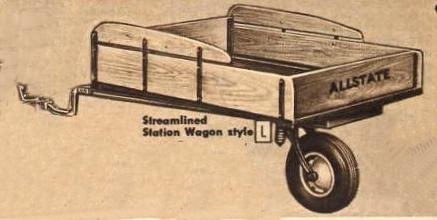 The Station Wagon
The Station Wagon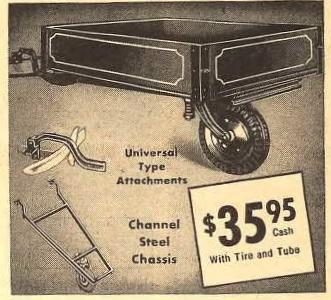 In the Spring 1941 catalog, the “Cross Country” trailer disappeared. Instead, the Chicago-made trailer was joined by another trailer from the same source in Chicago. This newest trailer was designed to replace the “Cross-Country” in the product line-up, since it was sold for around the same price and carried the same 750# load. It had a wooden box measuring 54″ x 48 ” x 9-3/4″, using apparently the same construction as its little brother. The box differed not only in dimension but in its detailing, with an ornamental pattern painted in a different color than the main color of the panels. The new trailer also used a different frame, a trapezoidal “channel steel” chassis instead of the X-frame used on the smaller model. The same “universal mount” tongues and new coil-spring suspension were used for both trailers. The prices were $29.95 and $34.95. The Fall-Winter 1942 catalog showed the same two trailers with the same ordering numbers and specs, at slightly increased prices. After this catalog, no single-wheel trailers show up in the catalog until 1948. I presume that they were discontinued for the duration of World War II, since manufacturing was devoted primarily to the war effort and things like steel and tires were in short supply. There was a kit offered in the Fall-Winter 1945 catalog for a four-wheel trailer, but no other utility trailers were offered.
In the Spring 1941 catalog, the “Cross Country” trailer disappeared. Instead, the Chicago-made trailer was joined by another trailer from the same source in Chicago. This newest trailer was designed to replace the “Cross-Country” in the product line-up, since it was sold for around the same price and carried the same 750# load. It had a wooden box measuring 54″ x 48 ” x 9-3/4″, using apparently the same construction as its little brother. The box differed not only in dimension but in its detailing, with an ornamental pattern painted in a different color than the main color of the panels. The new trailer also used a different frame, a trapezoidal “channel steel” chassis instead of the X-frame used on the smaller model. The same “universal mount” tongues and new coil-spring suspension were used for both trailers. The prices were $29.95 and $34.95. The Fall-Winter 1942 catalog showed the same two trailers with the same ordering numbers and specs, at slightly increased prices. After this catalog, no single-wheel trailers show up in the catalog until 1948. I presume that they were discontinued for the duration of World War II, since manufacturing was devoted primarily to the war effort and things like steel and tires were in short supply. There was a kit offered in the Fall-Winter 1945 catalog for a four-wheel trailer, but no other utility trailers were offered.